In the ever-evolving world of kitchen appliances, the panini press has emerged as a must-have gadget for food enthusiasts and casual cooks alike. This compact yet versatile countertop appliance has captured the hearts of consumers across the globe, offering a delightful way to enjoy perfectly toasted sandwiches at home. As the market for panini presses continues to grow, it’s essential to delve into the nuances of the industry, from the demand for dual voltage models to the challenges and opportunities faced by Original Equipment Manufacturers (OEMs). This exploration aims to shed light on these key aspects, providing a comprehensive understanding of the panini press market landscape.
I.IntroductiontothePaniniPressMarket
The world of culinary appliances has seen a surge in popularity for compact and efficient cooking gadgets, and the panini press is no exception. This versatile kitchen tool has transformed the way we enjoy our sandwiches, offering a perfect blend of toasted bread with melted cheese and other fillings. As the demand for convenience and gourmet experiences grows, the panini press market has expanded globally, with a particular focus on the 120V/240V dual voltage models that cater to a broad range of regions. This introduction delves into the intricacies of the panini press market, highlighting its current state, growth potential, and the role of OEMs in shaping this dynamic industry.
The panini press market is marked by its diverse product offerings, ranging from budget-friendly models to premium, high-tech devices. Consumers are increasingly drawn to features that not only enhance the taste and texture of their sandwiches but also add a touch of style to their kitchen countertops. From single-slot to multi-slot presses, the variety available reflects the market’s adaptability to different consumer needs and preferences.
In recent years, the panini press has transitioned from a niche kitchen gadget to a staple in many homes. This shift can be attributed to several factors, including the rise of fast-paced lifestyles that prioritize quick and easy meal options, as well as the growing popularity of outdoor cooking and social gatherings. The convenience of a panini press, which can cook a sandwich in minutes, has made it a favorite among busy professionals, families, and food enthusiasts alike.
The global market for panini presses is also influenced by cultural trends. In regions like Europe and North America, there’s a strong emphasis on culinary exploration and the incorporation of international flavors into everyday meals. This has led to the development of panini presses that can handle a variety of bread types and fillings, from traditional Italian paninis to fusion sandwiches that blend different cultures.
One of the standout features of the panini press market is the dual voltage capability. The 120V/240V models are designed to operate effectively in both European and North American electrical systems, making them ideal for OEMs looking to expand their product lines internationally. This dual voltage feature not only broadens the market reach but also enhances the product’s appeal to consumers who travel or plan to use their panini press in different countries.
The panini press market is also characterized by a competitive landscape, with numerous brands vying for market share. Key players are known for their innovative designs, durable construction, and commitment to customer satisfaction. These companies often focus on integrating advanced technologies, such as adjustable heat settings and non-stick surfaces, to provide users with a superior cooking experience.
Additionally, the market is witnessing a trend towards sustainability and energy efficiency. As consumers become more environmentally conscious, there’s a growing demand for appliances that consume less energy without compromising performance. This shift has prompted OEMs to develop panini presses that are not only energy-efficient but also eco-friendly.
In terms of distribution channels, the panini press market is well-serviced by both brick-and-mortar retail stores and online platforms. Online sales have seen a significant uptick, driven by the convenience of shopping from home and the ease of comparing different models and features. This digital transformation has also allowed OEMs to reach a wider audience and gather valuable customer feedback in real-time.
Looking ahead, the panini press market is poised for continued growth. The rise of health-conscious consumers who seek nutritious and delicious meal options is expected to further propel the demand for panini presses. Additionally, the integration of smart technology into these appliances could open up new opportunities for OEMs to create interactive and user-friendly products.
In conclusion, the panini press market is a dynamic and evolving sector that reflects the changing tastes and lifestyles of consumers worldwide. With a focus on innovation, dual voltage capabilities, and sustainability, OEMs are well-positioned to capitalize on the market’s growth potential and cater to the diverse needs of global consumers.
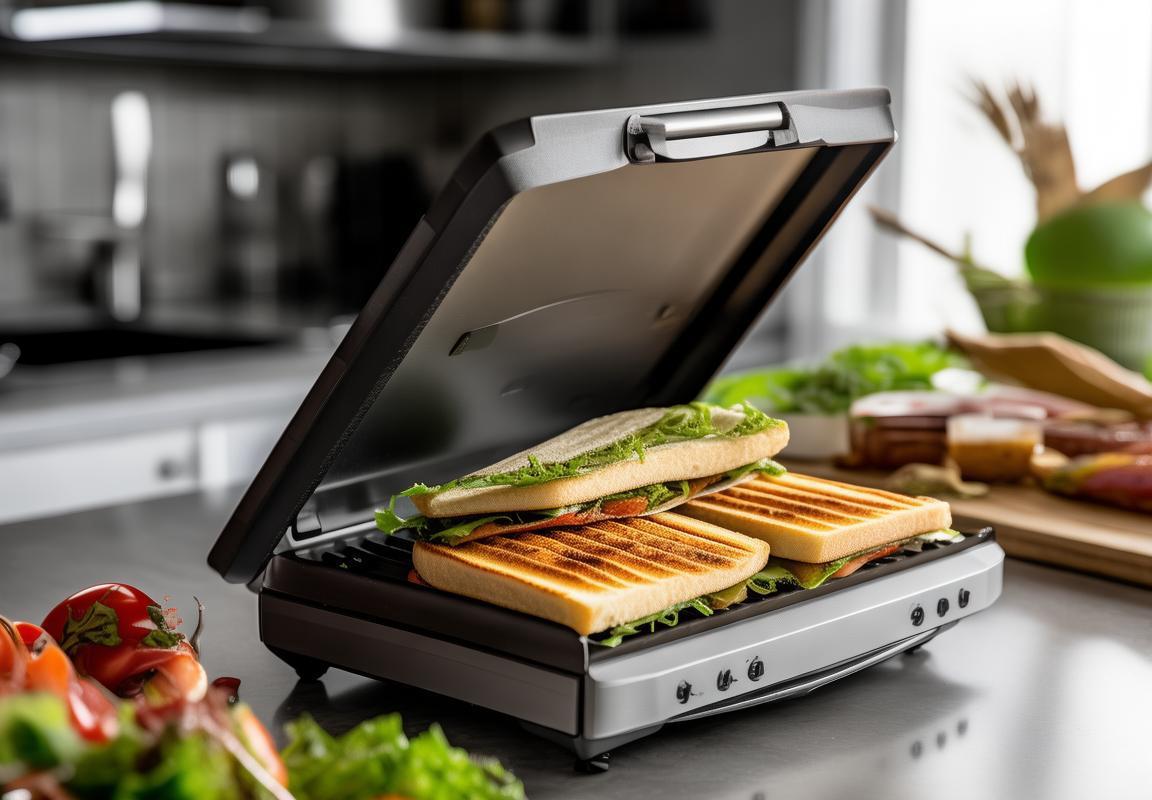
II.TheNeedfor120V/240VDualVoltagePaniniPresses
In today’s interconnected world, the demand for versatile appliances that cater to diverse electrical standards is on the rise. One such product that stands out is the 120V/240V dual voltage panini press. This multifunctional kitchen gadget has become a staple in households across the globe, offering a unique blend of convenience and culinary versatility. Let’s delve into why this dual voltage feature is not just a luxury but a necessity in the panini press market.
The global marketplace is a melting pot of different electrical systems, with 120V being the standard in North America and 240V being the norm in Europe and many other parts of the world. This discrepancy poses a significant challenge for manufacturers and consumers alike. For instance, a panini press designed exclusively for 120V may not function properly or at all in a 240V environment, and vice versa. This is where the dual voltage panini press steps in, ensuring compatibility and reliability regardless of location.
One of the primary reasons for the need for 120V/240V dual voltage panini presses is the convenience it offers to travelers. Whether you’re jetting off to a European vacation or heading to a friend’s house in another country, having a panini press that can adapt to different voltage settings means you can enjoy your favorite grilled sandwiches without the hassle of finding a compatible appliance. This flexibility is especially appealing to expatriates and frequent travelers who want to bring a piece of home with them wherever they go.
Moreover, dual voltage appliances are a testament to the evolving nature of global trade. As the world becomes more interconnected, businesses are looking for products that can cater to a broader customer base. For OEMs (Original Equipment Manufacturers) in the panini press industry, offering a dual voltage model allows them to tap into both North American and European markets, potentially doubling their customer reach.
From a consumer perspective, the dual voltage feature also addresses safety concerns. When using appliances that are not designed for the local voltage, there’s always a risk of overheating or damage due to incorrect voltage levels. A panini press that can handle both 120V and 240V reduces these risks, providing peace of mind to users who may not be as familiar with the intricacies of electrical systems.
Another aspect to consider is the growing trend of online shopping. With the ease of purchasing goods from around the world, consumers are increasingly looking for products that can be used in their homes without the need for additional adapters or transformers. The dual voltage panini press fulfills this need, making it an attractive option for online shoppers who want a hassle-free experience.
In terms of innovation, the dual voltage panini press showcases the industry’s commitment to meeting consumer demands. As technology advances, manufacturers are finding new ways to integrate dual voltage capabilities into their products, often without compromising on size, weight, or functionality. This innovation not only makes the panini press more practical but also sets a precedent for other kitchen appliances to follow.
Furthermore, the dual voltage panini press is a nod to sustainability. By reducing the need for additional power conversion devices, such as transformers or voltage converters, these appliances contribute to a reduction in electronic waste. This eco-friendly approach aligns with the values of many consumers who are increasingly conscious of their environmental footprint.
Lastly, the dual voltage panini press reflects the changing landscape of international cuisine. With the spread of culinary cultures, people are more likely to experiment with different types of cooking methods and ingredients. A panini press that can be used anywhere in the world allows for greater culinary exploration, as users can enjoy a variety of international recipes without being limited by their location.
In conclusion, the need for 120V/240V dual voltage panini presses is a multifaceted issue that touches on convenience, safety, market expansion, consumer preferences, innovation, sustainability, and culinary exploration. As the panini press market continues to evolve, it’s clear that this dual voltage feature is not just a trend but a fundamental aspect of the appliance’s design that is here to stay.
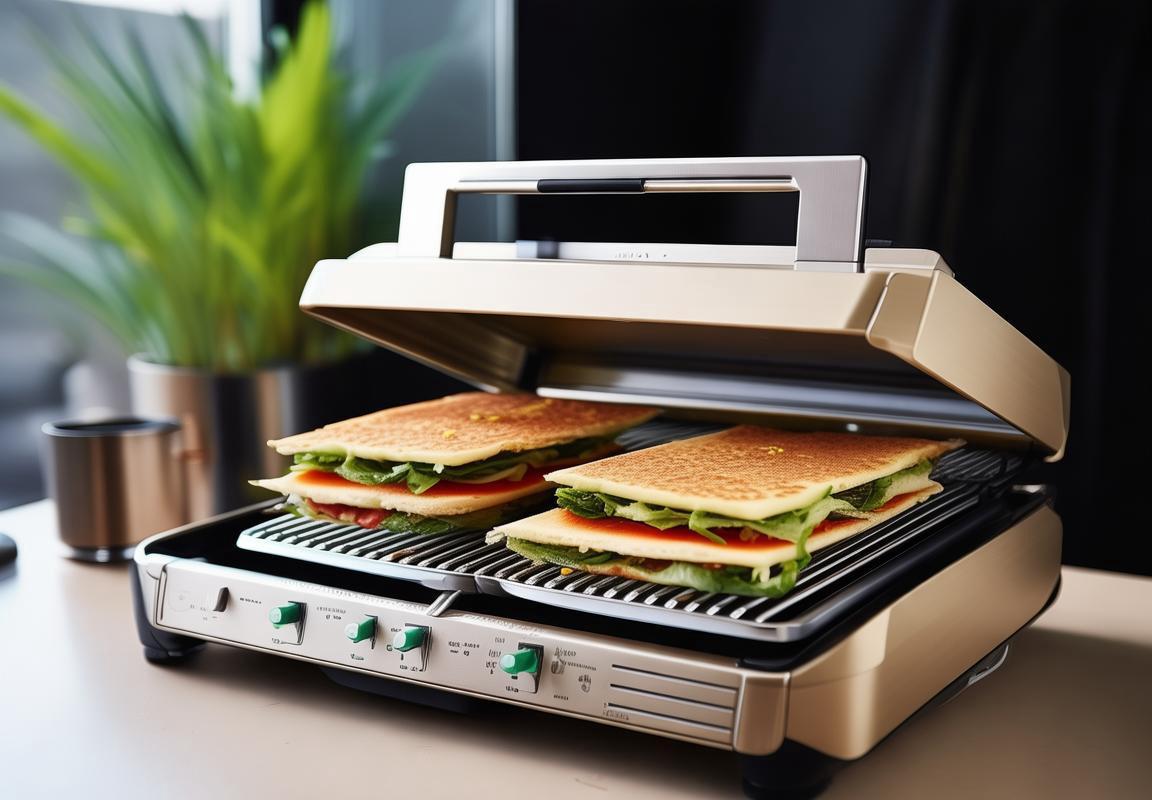
III.MarketDynamicsinEurope
In Europe, the market for 120V/240V dual voltage panini presses is shaped by a unique blend of culinary trends, consumer preferences, and cultural nuances. Here’s an insight into the dynamics that drive this market:
European consumers have a strong appreciation for artisanal cooking and high-quality appliances. This preference is reflected in the demand for dual voltage panini presses, which offer both versatility and precision. The continent’s diverse range of cultures contributes to a varied palette of panini styles, from the traditional Italian panini to the French croque-monsieur and the Spanish tortilla.
The demand for convenience and efficiency in meal preparation is on the rise, especially among busy professionals and families. Dual voltage panini presses cater to this need by providing a quick and easy way to enjoy a delicious, homemade sandwich. This trend is particularly pronounced in urban areas where time is a premium.
In the UK, for example, the demand for panini presses has been growing, driven by the popularity of coffee shops and the increasing number of home chefs looking to replicate their favorite café-style sandwiches. Similarly, in Germany, there’s a trend towards healthier eating, which has fueled the demand for appliances that can offer a variety of cooking options, including panini presses.
Brands that offer dual voltage panini presses must navigate the complexities of the European market, which includes strict safety regulations and varying electrical standards across different countries. The CE mark, for instance, is a requirement for electrical appliances sold in the European Union, ensuring that products meet health, safety, and environmental protection requirements.
One key aspect of the European market is the emphasis on innovation and design. Consumers are not only looking for a reliable appliance but also one that complements their kitchen decor. This has led to a rise in sleek, modern panini presses that not only perform well but also look stylish.
Moreover, sustainability is a growing concern, and European consumers are increasingly looking for appliances that are energy-efficient and have a smaller environmental footprint. Dual voltage panini presses that consume less energy and can be easily recycled or disposed of responsibly are likely to gain a competitive edge.
The competitive landscape is also dynamic, with established players and new entrants vying for market share. Local brands often have a strong presence, while international brands like Breville and DeLonghi have made significant inroads. These companies often offer a range of dual voltage models to cater to different price points and consumer needs.
The European market for dual voltage panini presses is further influenced by seasonal trends. For instance, during the winter months, the demand for warm, comforting sandwiches increases, while in the summer, lighter, cold sandwiches might be more popular. This fluctuation requires OEMs to be adaptable and to anticipate market changes.
Lastly, the European market is highly price-sensitive, with consumers often comparing the value offered by different brands and models. This means that OEMs need to balance the quality and features of their products with competitive pricing to remain attractive to consumers.
In summary, the market dynamics in Europe for 120V/240V dual voltage panini presses are driven by a combination of cultural preferences, regulatory compliance, design trends, sustainability concerns, and economic factors. Navigating this landscape successfully requires a deep understanding of the market and the ability to adapt to its ever-changing demands.
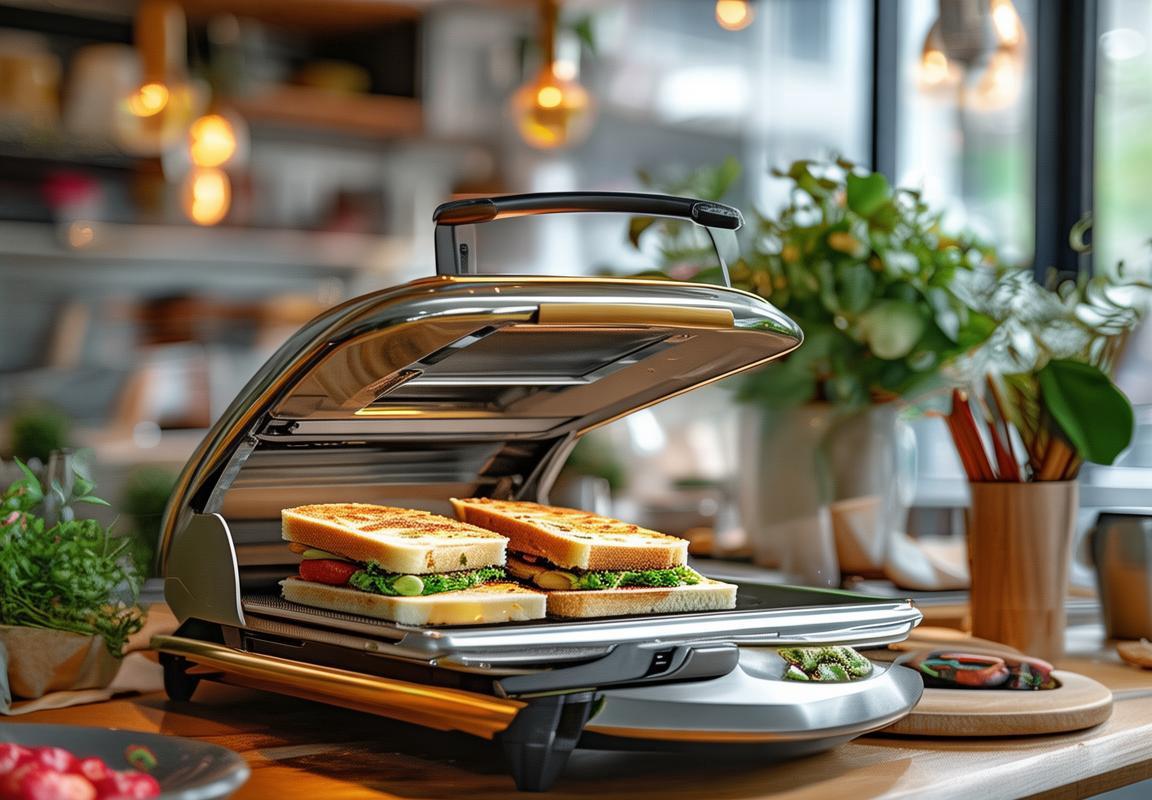
IV.MarketDynamicsinNorthAmerica
In North America, the market for 120V/240V dual voltage panini presses has been shaped by a blend of culinary culture, technological advancements, and consumer preferences. Here’s an exploration of the dynamics at play:
The demand for convenience and gourmet cooking experiences has surged, with panini presses becoming a staple in many kitchens. These versatile appliances cater to a range of tastes, from casual home chefs to culinary enthusiasts who seek to replicate restaurant-quality sandwiches at home.
One notable trend is the rise of health-conscious consumers. Many are opting for fresh, homemade meals over processed snacks, and the ability to toast and grill ingredients like whole grain bread, lean proteins, and fresh vegetables is highly appealing. This shift has bolstered the demand for dual voltage panini presses, which offer both traditional toasting and grilling capabilities.
Cultural diversity has also played a significant role in the market dynamics. In cities like New York, Los Angeles, and Chicago, a variety of international cuisines are celebrated, leading to a demand for panini presses that can handle different types of breads and cooking temperatures. This has encouraged OEMs to offer models that are not only dual voltage but also have adjustable heat settings and non-stick surfaces that can handle various ingredients without sticking.
The North American market is highly competitive, with several well-known brands vying for market share. Brands like Breville, Cuisinart, and Hamilton Beach have established themselves as go-to names for kitchen appliances, and they’ve leveraged their reputation to launch dual voltage panini presses that cater to the region’s diverse needs.
Smart technology has also made its way into the panini press market. Many modern models now come equipped with digital controls, programmable settings, and LED displays that make it easier for users to achieve the perfect cooking temperature and time. This added functionality has not only increased convenience but has also made the appliances more appealing to tech-savvy consumers.
In terms of distribution, online retailers have become a significant channel for panini presses. Websites like Amazon and Best Buy offer a wide range of options, including dual voltage models, and they’ve made it easier for consumers to compare features and prices. This has also allowed OEMs to reach a broader audience and capitalize on the ease of online shopping.
Regulatory compliance is another key factor. In North America, appliances must meet strict safety standards, and dual voltage models must undergo rigorous testing to ensure they can safely operate in both 120V and 240V environments. This has led to a demand for OEMs that can provide both quality and compliance, which is crucial for maintaining consumer trust.
The pandemic has also had a lasting impact on the market. With increased time spent at home, there’s been a surge in kitchen appliance sales, including panini presses. The need for home entertainment and the desire to create restaurant-style meals have driven many consumers to invest in these versatile appliances.
Finally, the market for 120V/240V dual voltage panini presses in North America is influenced by seasonal trends. For example, during the warmer months, there’s a greater interest in outdoor cooking and entertaining, which can lead to increased sales of portable and outdoor panini presses. Conversely, in the colder months, the focus may shift more towards countertop models that offer ease of use and convenience.
In summary, the market dynamics in North America are driven by a combination of consumer preferences, technological innovation, cultural influences, and regulatory requirements. As the landscape continues to evolve, OEMs will need to stay attuned to these factors to remain competitive and meet the needs of their customers.
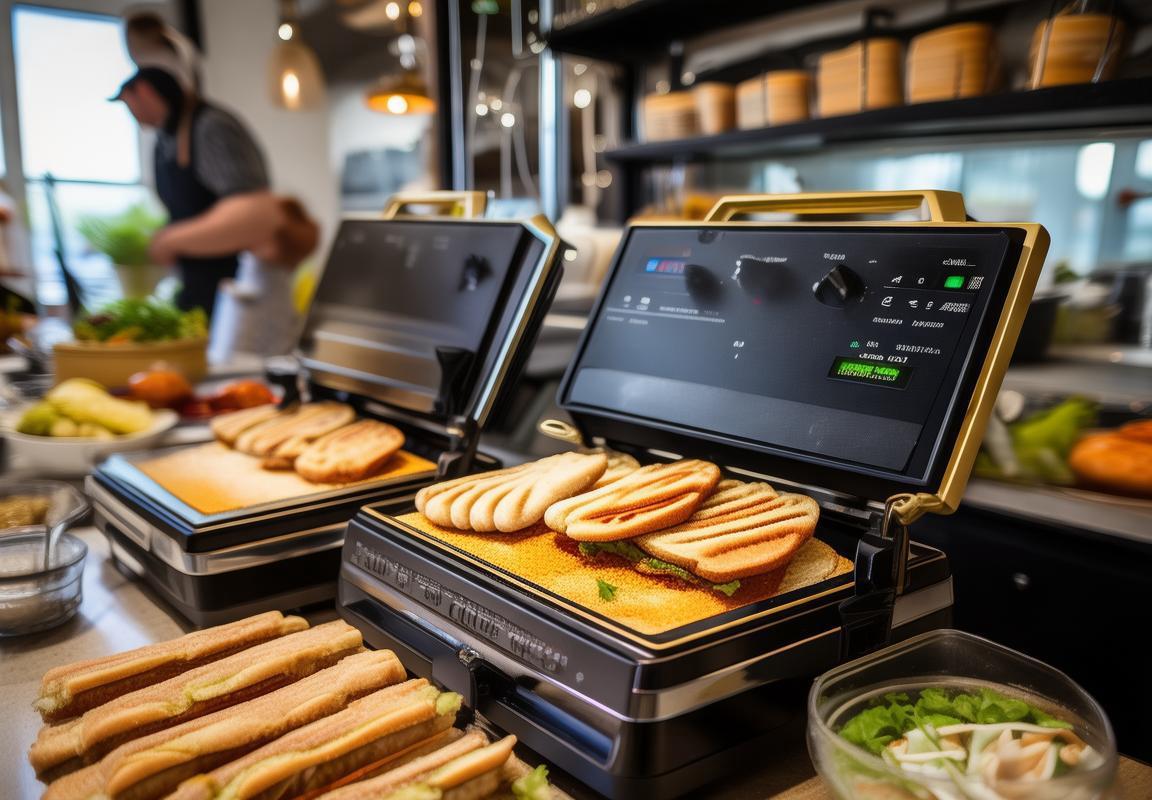
V.ChallengesandOpportunitiesintheOEMSpace
Navigating the complexities of the OEM space, the panini press industry faces a unique set of challenges and opportunities that can shape its future. From regulatory hurdles to technological advancements, here’s an exploration of the dynamics at play:
Innovation Pressure
The rapid pace of technological innovation places significant pressure on OEMs to continuously improve their products. Keeping up with new materials, heating elements, and user interface advancements is crucial for OEMs to remain competitive and meet consumer expectations.
Regulatory Compliance
Compliance with various international standards and certifications is a major challenge. Ensuring that products meet safety regulations, energy efficiency requirements, and electromagnetic compatibility (EMC) standards across different regions can be a complex and costly endeavor for OEMs.
Global Supply Chain Management
The global nature of the OEM market demands a robust supply chain. Managing suppliers, maintaining inventory, and ensuring timely delivery of components can be challenging. OEMs must navigate trade agreements, tariffs, and logistical issues to keep their production lines running smoothly.
Customization and Personalization
Consumers today are seeking more personalized and customizable products. This trend pushes OEMs to offer a wide range of options and features, which can complicate manufacturing processes and increase costs. Balancing customization with economies of scale is a delicate balance for OEMs.
Cost Management
The competitive landscape requires OEMs to manage costs effectively while maintaining quality. This involves optimizing production processes, finding cost-effective materials, and streamlining operations. Cost management is particularly challenging when dealing with high-volume, low-cost products.
Design and Development
Creating innovative and aesthetically pleasing designs is essential for attracting consumers. However, design and development can be resource-intensive. OEMs must invest in R&D to stay ahead of the curve without compromising on the time-to-market.
Brand Collaboration
Collaborating with established brands can open new markets and customer segments. However, such partnerships often come with their own set of challenges, including maintaining brand integrity and managing expectations.
Sustainability
Consumers are increasingly aware of environmental issues, and sustainability is becoming a key consideration. OEMs must develop greener manufacturing processes, use recyclable materials, and produce energy-efficient products to appeal to eco-conscious consumers.
Market Diversification
To mitigate risks associated with market volatility, OEMs are looking to diversify their product lines and enter new markets. This diversification requires a deep understanding of different consumer needs and preferences, as well as the ability to adapt production processes accordingly.
Intellectual Property Protection
OEMs must safeguard their intellectual property (IP) to prevent copying and to maintain a competitive edge. This involves registering patents, trademarks, and copyrights, which can be a costly and time-consuming process.
Customer Service and Support
Providing exceptional customer service is critical for OEMs, especially when dealing with complex products like panini presses. Offering comprehensive support and handling warranty claims can be challenging but is essential for building trust with customers.
In summary, the OEM space for panini presses is filled with multifaceted challenges that require strategic planning, innovation, and adaptability. Despite these hurdles, the opportunities for growth, innovation, and market leadership are substantial for those able to navigate these complexities effectively.

VI.ConsumerInsightsandPreferences
Understanding the nuances of consumer preferences in the panini press market is crucial for OEMs looking to cater to a global audience. Here’s a delve into what consumers are seeking:
Consumers today are not just looking for a device that performs a single task; they’re seeking versatility. The demand for multi-functional appliances has surged, and panini presses are no exception. Users want a machine that can not only grill sandwiches but also toast bread, sear vegetables, or even serve as a makeshift griddle for pancakes.
Quality and DurabilityQuality and durability are paramount in the appliance market. Consumers are willing to invest more in a panini press that promises longevity and reliability. They look for robust construction, high-quality materials, and features that minimize the risk of breakdowns or malfunctions.
Design and AestheticsThe design of a panini press plays a significant role in consumer preferences. Modern consumers appreciate sleek, contemporary designs that fit well with their kitchen decor. Aesthetically pleasing appliances not only enhance the visual appeal of the kitchen but also reflect the user’s personal style.
Ease of UseA panini press that’s a breeze to use is highly sought after. Consumers are looking for intuitive controls, clear instructions, and a user-friendly interface. Features like adjustable heat settings, non-stick surfaces, and easy-to-clean components are all factors that contribute to a positive user experience.
Safety FeaturesSafety is a major concern for consumers, especially when it comes to kitchen appliances. Features like automatic shut-off, temperature controls, and cool-touch handles are essential in reassuring customers that their safety and that of their family members are a priority.
Versatility in Cooking OptionsThe ability to cook a variety of dishes is a big draw for consumers. A panini press that can handle different types of food, from sandwiches to paninis, to even small pizzas, is more likely to be favored. The versatility of an appliance often translates to a higher likelihood of it being used regularly.
Customization and PersonalizationCustomization has become a significant trend in the appliance market. Consumers are interested in products that allow them to tailor their cooking experience. This could include adjustable heat settings, various cooking modes, or even digital interfaces that offer a range of recipes and cooking times.
Sustainability and Eco-Friendly PracticesWith growing environmental consciousness, consumers are increasingly interested in appliances that are energy-efficient and eco-friendly. They look for appliances that have a lower carbon footprint and contribute to a more sustainable lifestyle.
Brand Reputation and ReviewsThe reputation of a brand and the reviews from other users are powerful influencers. Consumers often rely on the experiences of others to guide their purchasing decisions. A strong brand with positive reviews can significantly sway a consumer’s choice.
Inclusivity and AccessibilityLastly, the inclusivity of a panini press is important. This means considering features that cater to a diverse range of users, including those with disabilities. An appliance that is accessible to all can be a major selling point for many consumers.
The insights into consumer preferences in the panini press market highlight the importance of balancing functionality, design, safety, and sustainability. OEMs that can deliver on these aspects are more likely to capture the attention and loyalty of today’s discerning consumers.
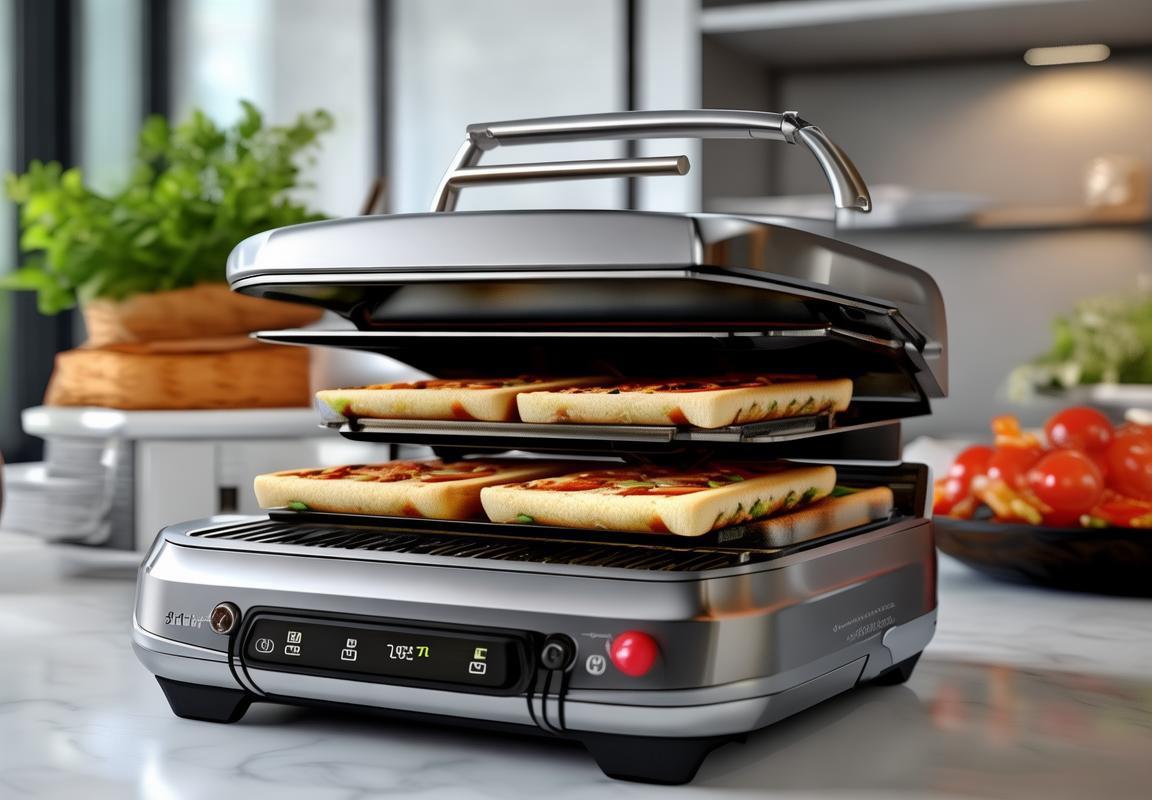
VII.Data-DrivenInsights
Understanding the market trends and consumer behavior through data analytics is crucial for the success of any product, including the 120V/240V dual voltage panini press. Here’s a breakdown of the insights gained from data-driven research:
-
Market Growth Analysis: Data reveals a steady increase in the demand for dual voltage appliances, with a particular surge in panini presses. This growth can be attributed to the rising popularity of international cuisines and the convenience of using a single appliance for various voltage systems.
-
Consumer Demographics: The data indicates that the primary consumers of dual voltage panini presses are young professionals and families living in urban areas. These demographics tend to value efficiency, versatility, and the ability to cook a variety of international dishes at home.
-
Usage Patterns: Usage data shows that the peak times for panini press usage correlate with lunch and dinner hours, suggesting that these appliances are not just for special occasions but are integrated into daily meal preparation routines.
-
Brand Loyalty: Consumers who have purchased dual voltage panini presses are likely to remain loyal to the brand, especially if the appliance meets their expectations in terms of performance, durability, and customer service.
-
Feature Preferences: Data from consumer surveys and product reviews highlight a preference for certain features such as adjustable temperature settings, non-stick cooking surfaces, and compact designs. These features are seen as essential for achieving the perfect panini every time.
-
Price Sensitivity: While there is a segment of the market that is willing to pay a premium for high-quality and high-end panini presses, the majority of consumers are sensitive to price and look for value for money. This data suggests that offering competitive pricing without compromising on quality can significantly boost sales.
-
Marketing Impact: Data from marketing campaigns and social media interactions show that targeted marketing strategies, such as influencer partnerships and interactive content, can drive consumer interest and increase sales. Understanding which platforms and messaging resonate best with the target audience is key.
-
E-commerce Influence: The rise of e-commerce has had a profound impact on the sales of dual voltage panini presses. Data indicates that online sales are growing at a faster rate than in-store sales, highlighting the importance of a strong online presence and user-friendly website for OEMs.
-
Product Returns and Warranties: Analysis of product returns and warranty claims provides valuable feedback on the reliability and quality of the appliances. Data-driven insights from this area can help OEMs improve product design and enhance customer satisfaction.
-
Sustainability Trends: As environmental concerns grow, data shows that consumers are increasingly interested in appliances that are energy-efficient and made with sustainable materials. This trend is shaping the product development strategies of many OEMs.
-
Competitor Analysis: Data-driven insights into competitor products and pricing strategies allow OEMs to differentiate their offerings. Understanding what competitors are doing well or poorly can provide a competitive edge.
-
Future Forecasting: By analyzing historical data and current market trends, experts can forecast future demand for dual voltage panini presses. This forecasting helps OEMs plan production, inventory, and marketing strategies more effectively.
These data-driven insights not only inform the strategic decisions of OEMs but also guide product development, marketing campaigns, and customer service initiatives, ultimately leading to a more competitive and consumer-centric approach in the dual voltage panini press market.

VIII.CaseStudies:SuccessfulDualVoltagePaniniPressOEMs
In the realm of dual voltage panini presses, a few OEMs have distinguished themselves with their innovative designs and strategic market approaches. Let’s delve into the case studies of these successful OEMs.
The Italian Oven ManufacturerThis OEM has made a name for itself by focusing on the high-quality materials used in their panini presses. With a robust build and sleek design, their product line has garnered attention across Europe and North America. They’ve also capitalized on the dual voltage feature, ensuring compatibility with various power grids. Their success lies in their commitment to research and development, consistently delivering features that cater to consumer needs, such as adjustable heating elements and non-stick cooking surfaces.
The Compact Chef InnovatorsThis company has found a niche market by specializing in compact panini presses that are perfect for small kitchens and dorm rooms. Recognizing the need for a versatile appliance that can easily adapt to different power supplies, they have embraced the 120V/240V dual voltage technology. Their product line includes travel-friendly models, making them a go-to for consumers who enjoy outdoor cooking or have international travel plans. The company’s strategy has been to emphasize portability and durability, which has resonated well with the target demographic.
The Eco-Conscious BrandsOne OEM has successfully positioned itself as an eco-conscious brand by offering dual voltage panini presses that are energy-efficient. They’ve integrated smart technology to optimize energy consumption and reduce waste. This approach has appealed to environmentally conscious consumers, who are willing to pay a premium for appliances that align with their values. By focusing on sustainability and performance, the company has not only expanded its market share but has also created a loyal customer base.
The Global Travelers’ FavouriteThis OEM has created a stir in the market with a line of panini presses designed for global travelers. Their dual voltage models are not only convenient for international use but also come with a variety of attachments that cater to different culinary preferences. From a traditional panini press to a flatbread maker, their product range has become a favorite among frequent travelers. The key to their success lies in their ability to anticipate the needs of a diverse consumer base and deliver solutions that are both functional and adaptable.
The High-End Gourmet LineFor those who consider their panini press an essential part of their gourmet kitchen, one OEM has crafted a high-end line of dual voltage appliances. These presses are adorned with premium materials, featuring advanced heating technology and precision control. The brand has targeted food enthusiasts and chefs who appreciate the craftsmanship and attention to detail. By positioning their product as a premium appliance, they have successfully commanded a higher price point and have gained a reputation for excellence.
The Multi-Functional Market LeaderThis OEM has managed to carve out a significant market share by offering panini presses with multiple functionalities. Their dual voltage models can not only grill sandwiches but also bake pizzas and cook pancakes. This versatility has appealed to a wide range of consumers who seek a single appliance that can serve multiple purposes. The company’s strategy has been to simplify kitchen tasks and provide convenience, which has helped them stand out in a crowded market.
Each of these case studies showcases the unique approach taken by successful OEMs in the dual voltage panini press market. From focusing on quality and innovation to catering to specific consumer segments, these brands have demonstrated how to thrive in a competitive landscape.
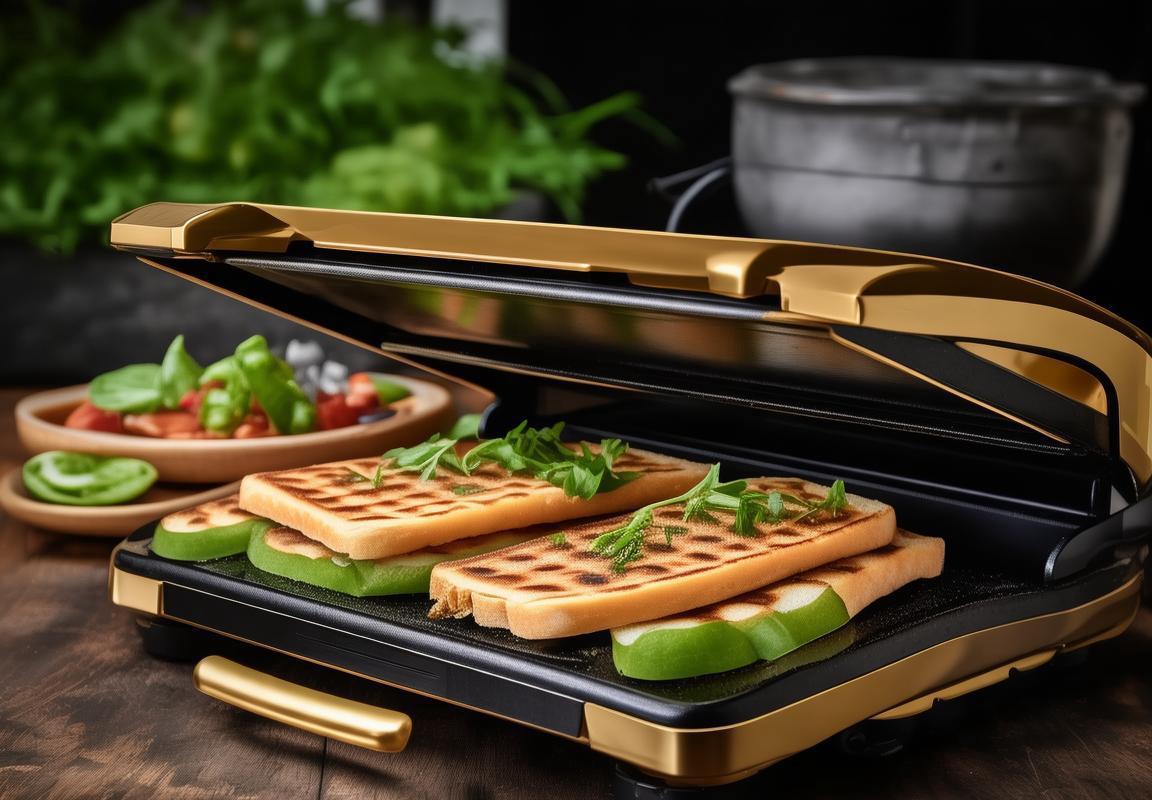
IX.FutureOutlookandPredictions
The market for dual voltage panini presses is poised for significant growth, driven by a combination of evolving consumer habits and technological advancements. As we look ahead, several trends are shaping the future landscape of this niche market.
Consumer demand for convenience and versatility is on the rise, and dual voltage appliances like panini presses cater to this need perfectly. With the ability to operate in different voltage standards, these devices can easily transition between countries, making them ideal for travelers and expatriates. This flexibility is expected to continue driving the market forward.
The integration of smart technology is another key factor. As consumers become more tech-savvy, they are seeking appliances that not only perform well but also offer connectivity and customization. Smart panini presses with features like adjustable heat settings, timer functions, and even Bluetooth connectivity to mobile devices are likely to gain popularity in the coming years.
Sustainability is also playing a role in the future of the panini press market. As environmental concerns grow, manufacturers are focusing on creating more energy-efficient models. This includes the use of eco-friendly materials and energy-saving designs. As consumers become more environmentally conscious, these sustainable practices could become a significant selling point.
Globalization and cross-cultural influences are expanding the market’s reach. Panini presses, once a staple in Italian cuisine, are now embraced by a global audience. This cultural crossover is opening up new markets and opportunities for OEMs to tailor their products to diverse culinary preferences.
The rise of e-commerce is another factor that’s reshaping the market. Online sales platforms are making it easier for consumers to access dual voltage panini presses from anywhere in the world. This increased accessibility is expected to broaden the customer base and accelerate market growth.
Regulatory compliance remains a challenge for OEMs, especially as they expand into new markets. Different countries have varying standards for electrical appliances, and navigating these can be complex. However, staying compliant is crucial for maintaining brand reputation and customer trust.
Innovation in materials and manufacturing processes is also a driving force. As OEMs seek to differentiate their products, they are investing in research and development to create panini presses that are not only functional but also aesthetically pleasing and durable. This focus on innovation is likely to lead to more sophisticated and user-friendly designs.
Finally, the rise of health-conscious consumers has had a profound impact on the market. As people look for healthier alternatives to fast food, the convenience of a panini press becomes even more appealing. The ability to quickly prepare a homemade, nutritious meal is a strong selling point that is expected to endure.
In conclusion, the future of the dual voltage panini press market is bright, with a multitude of opportunities for growth and innovation. As consumer preferences continue to evolve, so too will the products offered by OEMs, ensuring that the panini press remains a versatile and essential kitchen appliance for years to come.
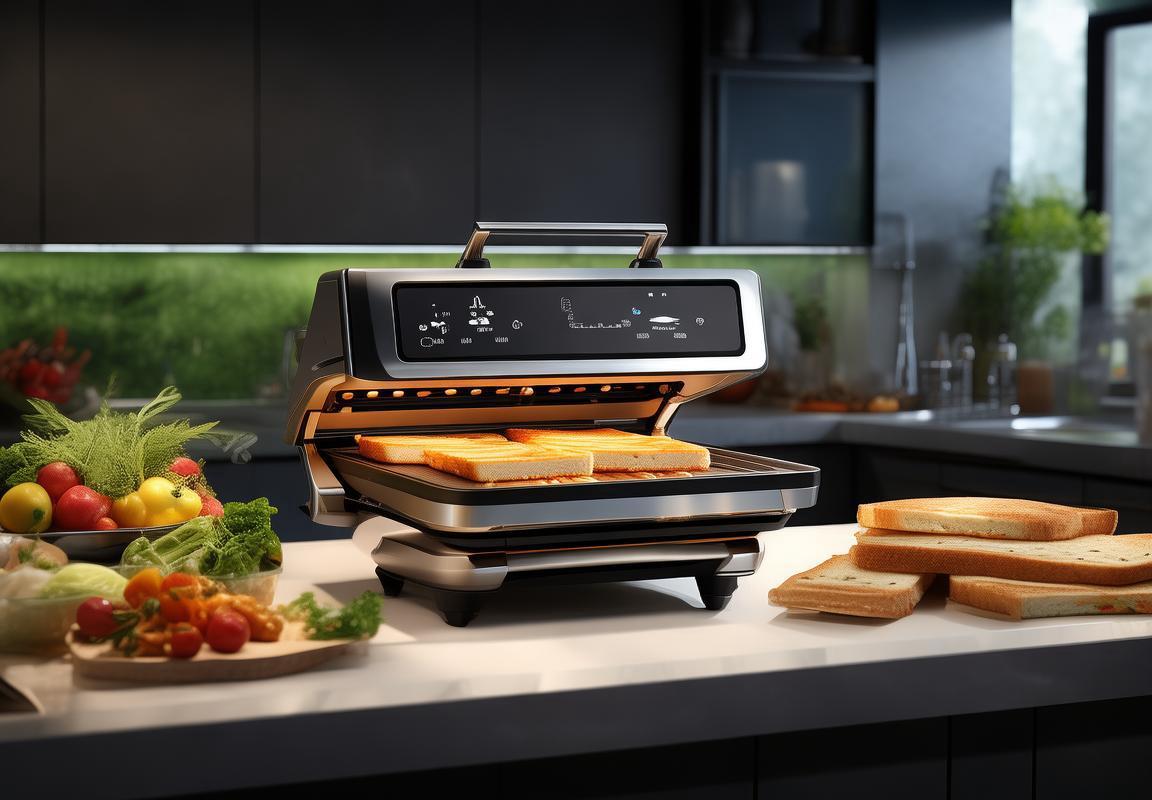
X.Conclusion
In the ever-evolving landscape of the kitchen appliance industry, the panini press has carved out a niche as a must-have for culinary enthusiasts and casual home cooks alike. As we delve into the future, it’s clear that several factors will shape the trajectory of the panini press market, offering both challenges and exciting opportunities.
The integration of smart technology into kitchen appliances is a trend that’s gaining momentum. With the rise of the Internet of Things (IoT), panini presses could soon feature smart features like connectivity to smartphones, allowing users to control and monitor cooking times and temperatures remotely. This integration could also enable the collection of data that can be used to improve the appliance’s performance and user experience.
Sustainability is another key factor. As consumers become more environmentally conscious, there’s a growing preference for appliances made with sustainable materials and energy-efficient designs. OEMs that can offer eco-friendly panini presses will likely find a receptive market, especially in regions where green initiatives are heavily promoted.
Market saturation could pose a challenge, but it also presents an opportunity for innovation. As competition intensifies, companies may need to differentiate their products through unique design, superior build quality, or innovative features. This could lead to a surge in product innovation, ultimately benefiting consumers with a wider range of choices.
Demographic shifts are also influencing the market. The aging population, for instance, may require panini presses with larger buttons and easier-to-read displays, catering to their needs. On the other hand, younger consumers might be more interested in sleek, modern designs and connectivity features. Adapting to these changing demographics will be crucial for OEMs looking to capture market share.
The rise of online shopping and e-commerce has revolutionized the way consumers purchase kitchen appliances. As more people shop online, OEMs will need to ensure their products are well-represented on digital platforms, with compelling product descriptions, high-quality images, and user-generated content that can influence purchasing decisions.
Lastly, regulatory changes and certifications play a significant role in the market. Compliance with various safety and environmental standards is essential, but it can also become a differentiator. Companies that can demonstrate their commitment to adhering to the latest regulations may gain a competitive edge, especially in regions where these certifications are highly valued.
In conclusion, while the future of the panini press market is filled with uncertainties, it also brims with opportunities. OEMs that embrace technological advancements, prioritize sustainability, adapt to changing consumer preferences, and navigate the complexities of the digital marketplace will be well-positioned to thrive. The key lies in staying agile and responsive to the dynamic needs of a consumer base that is both diverse and ever-changing.